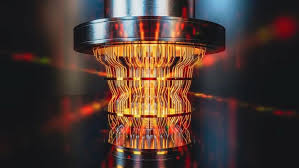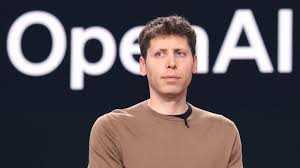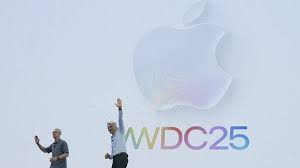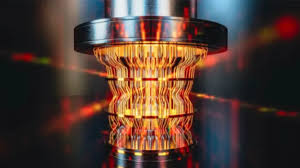Technology
Featured
The Race to Quantum Supremacy: Inside the 2025 Breakthroughs from Microsoft, Google, and AWS
Editor
Jun 21, 2025
min read
5 views

The theoretical threat of quantum hacking is rapidly moving toward practical reality, as the world's tech giants engage in a high-stakes race to build a fault-tolerant quantum computer. Throughout late 2024 and the first half of 2025, Microsoft, Google, and AWS have each announced significant breakthroughs, revealing distinct and competing strategies for overcoming the immense scientific challenges of building a machine powerful enough to break modern encryption.
The core challenge in quantum computing is managing 'qubits,' the fundamental units of quantum information. Unlike classical bits (0s or 1s), qubits can exist in a superposition of both states simultaneously. However, they are incredibly fragile and susceptible to 'noise' from their environment (like heat or electromagnetic fluctuations), which causes them to lose their quantum state in a process called decoherence. A truly powerful quantum computer requires a large number of stable, high-quality, and interconnected qubits.
In February 2025, Microsoft made waves by unveiling its 'Majorana 1' quantum processor, the first powered by topological qubits. This represents a fundamentally different approach from its competitors. Instead of fighting decoherence with brute-force error correction, Microsoft's strategy is to build a more inherently stable qubit from the ground up. Topological qubits encode information in the 'braiding' of exotic quasiparticles called Majorana zero modes. The information is stored in the topology of the system, making it naturally resistant to local noise. While other quantum systems struggle with error rates, Microsoft claims its topological qubit exhibits remarkable stability, with decoherence events occurring only once per millisecond on average. Their roadmap now focuses on scaling up by creating arrays of these topological qubits, which they believe will dramatically reduce the overhead required for quantum error correction and pave a faster path to a million-qubit machine.
Meanwhile, Google, a long-time leader in the field, announced its 'Willow' chip in December 2024, focusing on a different critical challenge: quantum error correction. Google's approach uses more traditional superconducting qubits, which are faster but more error-prone. With Willow, Google demonstrated a crucial milestone: that as they increased the number of physical qubits used to create a single 'logical qubit,' the error rate of the logical qubit actually decreased. This proved that their error correction codes were working as intended and that their system was 'below threshold' for scalable quantum computation. The Willow chip doubled the number of available physical qubits and extended their 'coherence time'—the window in which computations can be performed—by a factor of five. Google's strategy is to tackle the error problem head-on, building robust error-correcting codes that can be scaled up with more, albeit noisy, physical qubits.
Not to be outdone, AWS unveiled its 'Ocelot' chip in February 2025, showcasing a clever hybrid approach focused on efficiency. Developed at the AWS Center for Quantum Computing, Ocelot is designed around 'cat qubits,' named after the famous Schrödinger's cat thought experiment. These qubits are engineered to intrinsically suppress certain types of errors, particularly bit-flip errors, without requiring complex external error correction. By building error correction directly into the hardware architecture, AWS claims Ocelot can reduce the resources and costs associated with this critical task by up to 90%. Their researchers believe this efficiency will accelerate the timeline to a practical, fault-tolerant quantum computer by as much as five years, making the technology smaller, more reliable, and cheaper to build.
These three distinct strategies—Microsoft's inherently stable topological qubits, Google's powerful error correction codes, and AWS's efficient 'cat qubit' architecture—highlight the complexity and uncertainty in the field. It is not yet clear which approach will ultimately prove most successful. However, the rapid succession of these breakthroughs in early 2025 indicates that the race to build a cryptographically relevant quantum computer is accelerating dramatically. Each announcement chips away at the immense technical barriers, bringing the world closer to a day when the very nature of computation, and hacking, will be fundamentally transformed.
Editor
League Manager Editorial Team






Leave a Comment